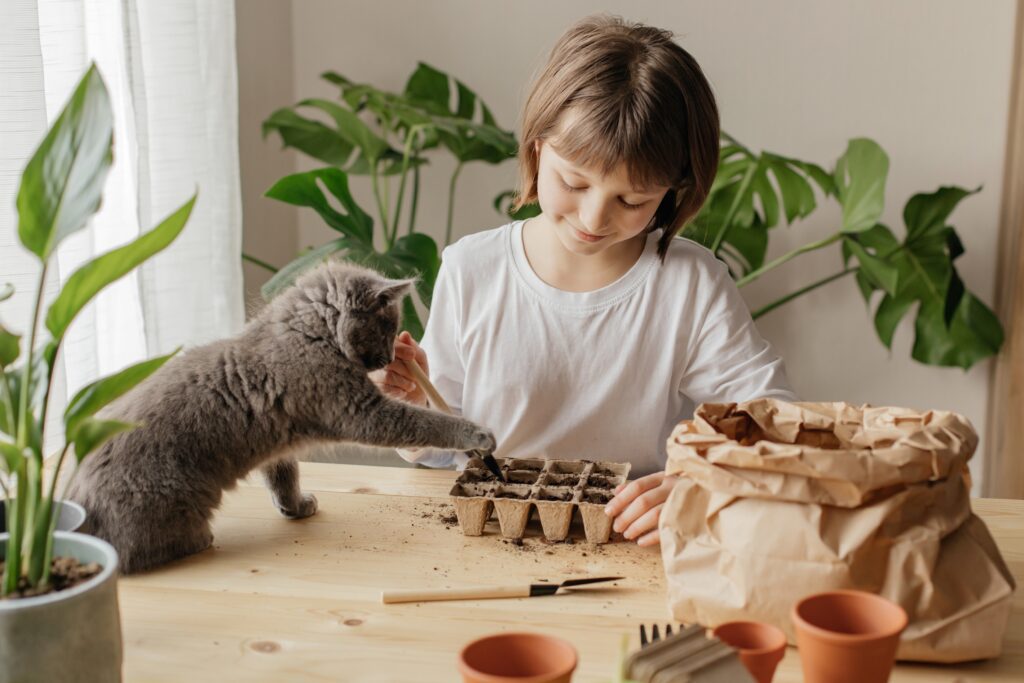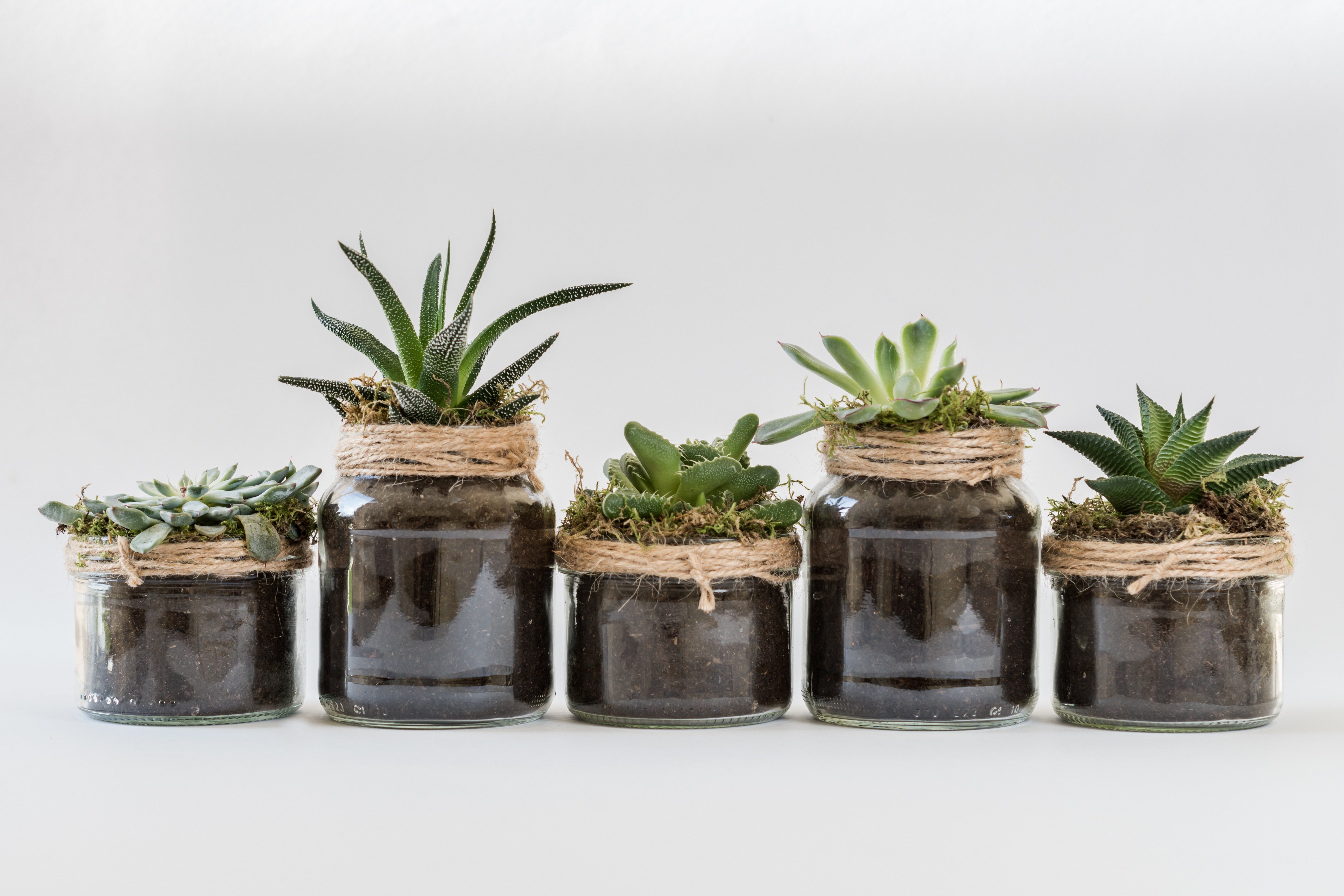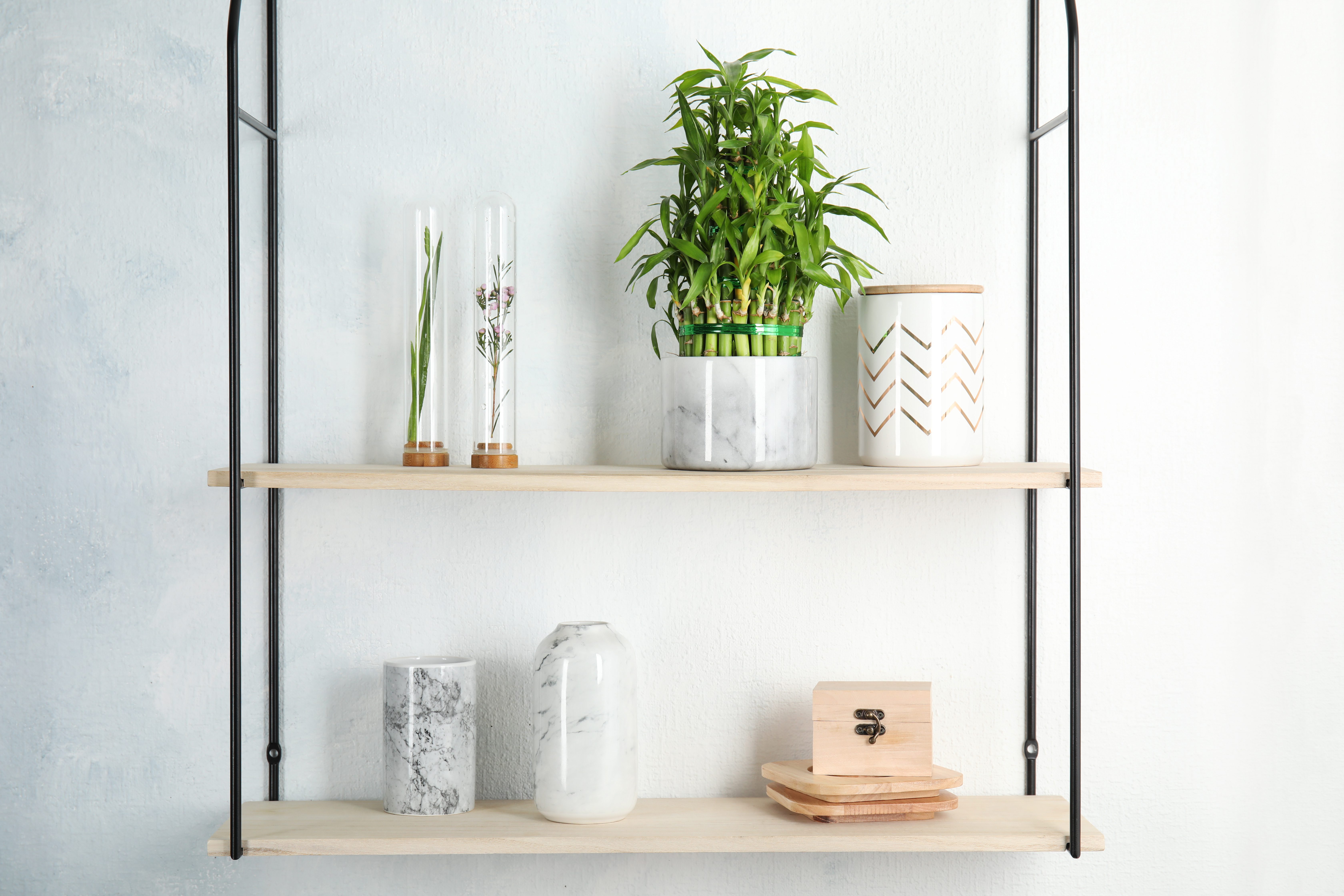10 Easy Houseplants to Keep Alive
Best Houseplants for Beginners
While some houseplants can be tricky to care for, there are plenty of easy houseplants to keep alive. These easy indoor houseplants tend to thrive in low light and moderate temperatures. They are also easy houseplants to keep alive because most of them can survive without much care or watering. While these indoor houseplants will still require a little bit of attention, they are generally the hardest to kill and the easiest to take care of. For those who are new to houseplants or just bad at keeping them alive, try one of these 10 easy houseplants for beginners.

Pothos Plant
The pothos plant is one of the simplest houseplants to own. The pothos plant is a trailing vine that can grow up to 30 feet in length. It goes by many names, including golden pothos, silver vine, taro vine, devil’s vine, and devil’s ivy. Pothos are well known for their indoor air purifying qualities. They remove harmful chemicals in the air such as benzene and formaldehyde.
Pothos Plant Care:
Pothos plants prefer bright, indirect light, but can easily thrive in areas that do not receive bright light like offices or classrooms. For pothos watering, you will want to allow the soil to dry out completely between waterings. Make sure to plant your pothos in well-draining potting soil. If over-watered, the leaves will show black spots and the roots of your plant will rot. Pothos prefer room temperature, and like rooms with high humidity, but will still do well in low humidity conditions.
Pet friendly?
Pothos are poisonous to cats, dogs, and other indoor pets. You should contact your veterinarian immediately if your pet ingests your pothos.
Snake Plant (Mother-in-law’s tongue)
The snake plant is another very popular houseplant because of its resilience. This plant is comprised of firm, upright leaves that can grow up to eight feet tall. Snake plants are incredibly easy to grow and very hard to kill. It does well in both bright light and low light and will survive when you forget to water it. The snake plant is also known to purify the air of chemicals like formaldehyde and benzene.
Snake Plant Care:
Snake plants prefer indirect sunlight. That being said, they can also survive in direct sun or low light. When choosing soil for your snake plant, choose a potting mix that is well-draining, like an all-purpose cactus potting soil. For snake plant watering, let the soil dry completely between watering. Snake plants can die from being watered too much, so avoid giving them too much love. Do not expose your snake plant to temperatures below 50 degrees Fahrenheit. Room temperature will do just fine. Snake plant repotting can happen about once a year since these plants grow rapidly.
Pet friendly?
This plant is not pet-friendly. The snake plant is toxic to cats, dogs, and people. If ingested, cats and dogs will experience nausea, vomiting, and diarrhea.
Spider Plant
Don’t be scared off by the name of the spider plant. It’s actually one of the easiest houseplants to keep alive. While spider plants prefer bright light, they will thrive in indirect or partial light. Unlike other houseplants, you will need to water your spider plant more often, but other than needing to be watered often, the plant will thrive in almost any condition. The spider plant is another indoor houseplant known for reducing indoor air pollution.
Spider Plant Care:
Spider plants should be kept at room temperature; never expose them to temperatures below 50 degrees Fahrenheit. Spider plant watering should happen often, along with an occasional mist. Plant your spider plant in a fast-draining potting mix. Spider plant propagation is fairly simple. Just take the young plantlets that grow off of your spider plant and pot them. Make sure they have developed roots. You do not need to re-pot your spider plant every year like some other houseplants.
Pet friendly?
Yes! Spider plants are not toxic to cats or dogs, so they are perfect indoor houseplants for homes with pets.
Cactus
It’s fairly simple to have a cactus as an indoor plant. With plenty of light and room temperature conditions, your cactus will thrive without much effort on your end. The best indoor cactus varieties are desert cacti and forest cacti. Desert cacti are the cacti that typically come to mind when you think of a cactus. They have spikes on the outside that protect them. Forest cacti actually grow in wooded tropical and subtropical areas. The most popular forest cacti would be the Christmas cactus. While both types of cacti are easy to take care of, they do have slightly different requirements.
Cactus Indoor Care:
Desert cacti are some of the hardest houseplants to kill. Place your cacti in a place with plenty of light. While they prefer hot climates, your cacti can survive temperatures anywhere between 55 and 80 degrees. Water your cactus when the soil is completely dry, but make sure the soil is fast-draining. If left in too much water, your cactus could die.
For your forest cactus, avoid direct sunlight. Instead, place your cactus in bright, indirect sunlight. Forest cacti can withstand colder temperatures, thriving between 50-70 degrees Fahrenheit. Water weekly, or when soil is dry to the touch. Avoid overwatering, as this will result in root rot and will cause the cactus to die.
Pet Friendly?
In terms of ingestion, cacti are not really toxic to your cat or dog. That being said, if your pet is not careful, it can find itself pricked with a bunch of tiny cacti spines. To be safe, keep your cacti out of reach from your pet.
Succulents
Succulents are one of the most popular houseplants for beginners. They are incredibly hard to kill and come in so many beautiful shapes and varieties. Technically, plants like cacti, aloe, and agave are succulent types. Because succulents are pretty tolerant of sunlight, room temperature, and watering, succulent houseplants are the perfect starter plant for anyone who most definitely lacks a green thumb.
Succulent Care:
Place your succulent somewhere with bright light. If the plant begins to turn brown or white, you may have to remove it from direct sunlight, as it is likely being scorched. Surprisingly, succulents are very adaptable to temperature. While they typically prefer temperatures between 50-85 degrees Fahrenheit, they can survive exposure to temperatures as low as 40 degrees. During the summer, you will want to water your succulents more frequently. During the winter, you can reduce watering to once a month. While succulents are practically impossible to kill, they can be killed with overwatering.
Pet Friendly?
Most succulents are non-toxic to cats and dogs, though there are some that have been known to be poisonous. You will want to avoid Euphorbias, Kalanchoes, Jade, Aloe, and Senecio Rowleyanus (also known as string of pearls). It is best to research your succulent before purchasing it to make sure it is not one of the varieties that are toxic to animals.
Dracaena (Dragon Tree)
The dracaena plant, also known as the dragon tree, is also a very popular houseplant. The dracaena marginata is a fantastic beginner plant because of its resilience in low-water conditions. Unlike other houseplants, the dracaena will survive when you forget to water it every now and then. When mature, your dragon tree will grow to about 2 to 3 feet tall. Like many other houseplants, the dracaena removes harmful chemicals from the air in your home.
Dracaena Plant Care:
Your dracaena plant will thrive in medium sunlight but can survive in shadier parts of your home. Avoid placing your dracaena in direct sunlight, as it will scorch and die. Your dracaena soil should be a well-draining potting mix with enough room for roots. Be careful to not overwater your Dracaena. Allow the soil to become slightly dry before watering, and use filtered water. Dracaena houseplants prefer higher temperatures, typically 70-80 degrees Fahrenheit. If you live in a household that does not experience humidity, make sure to mist your dracaena every so often.
Pet Friendly?
No. Dracaena is extremely poisonous to cats and dogs. If you have pets in your home, it is best to avoid this plant.
Lucky Bamboo
Lucky bamboo is technically also a dracaena but requires very different care than the dragon tree. These bamboo plants can survive in just about any room. These plants are considered good luck and are supposed to bring good fortune to those who own them. Bamboo houseplants can survive in both soil and water and do well in various lighting.
Lucky Bamboo Care:
Lucky bamboo prefers bright, indirect sunlight. If placed in direct sunlight, your bamboo will scorch and die. If placed in too dark of a location, you will notice your lucky bamboo lose some of its vibrant green colors. There are two ways to grow lucky bamboo. You can place your lucky bamboo in water and pebbles. Make sure to fill your bowl with at least one inch of filtered water and replace it every week. You can also grow lucky bamboo in soil. Plant your bamboo in moist, well-drained potting soil. Keep your bamboo in a room between 65 and 90 degrees Fahrenheit. If you notice your lucky bamboo turning yellow, this means that it is either in too much light or being over-fertilized. Adjust accordingly to reverse the issue.
Pet Friendly?
Lucky bamboo is not safe for cats and dogs, as it can be mildly toxic. If you choose to own it, place it somewhere out of reach from your pets.
Cast Iron Plant
The reason for owning this plant is all in its name. This plant is virtually indestructible. These plants require very little sunlight and will thrive in darker rooms that typically could not accommodate houseplants.
Cast Iron Plant Care:
The cast iron plant does well in semi-shade areas but can survive in bright light as well. Do not place your cast iron plant in direct sunlight. You will want to keep soil continuously moist, but not soaking. Cast iron plants do not like cold temperatures, and should not be placed anywhere that experiences temperatures lower than 60 degrees Fahrenheit. This plant is pretty hard to kill since it can survive in very dark environments and hot temperatures. Overwatering this plant can cause it to die. Be careful not to waterlog the soil.
Pet Friendly?
Cast iron plants are non-toxic to cats and dogs and are completely safe to have in a home with pets.
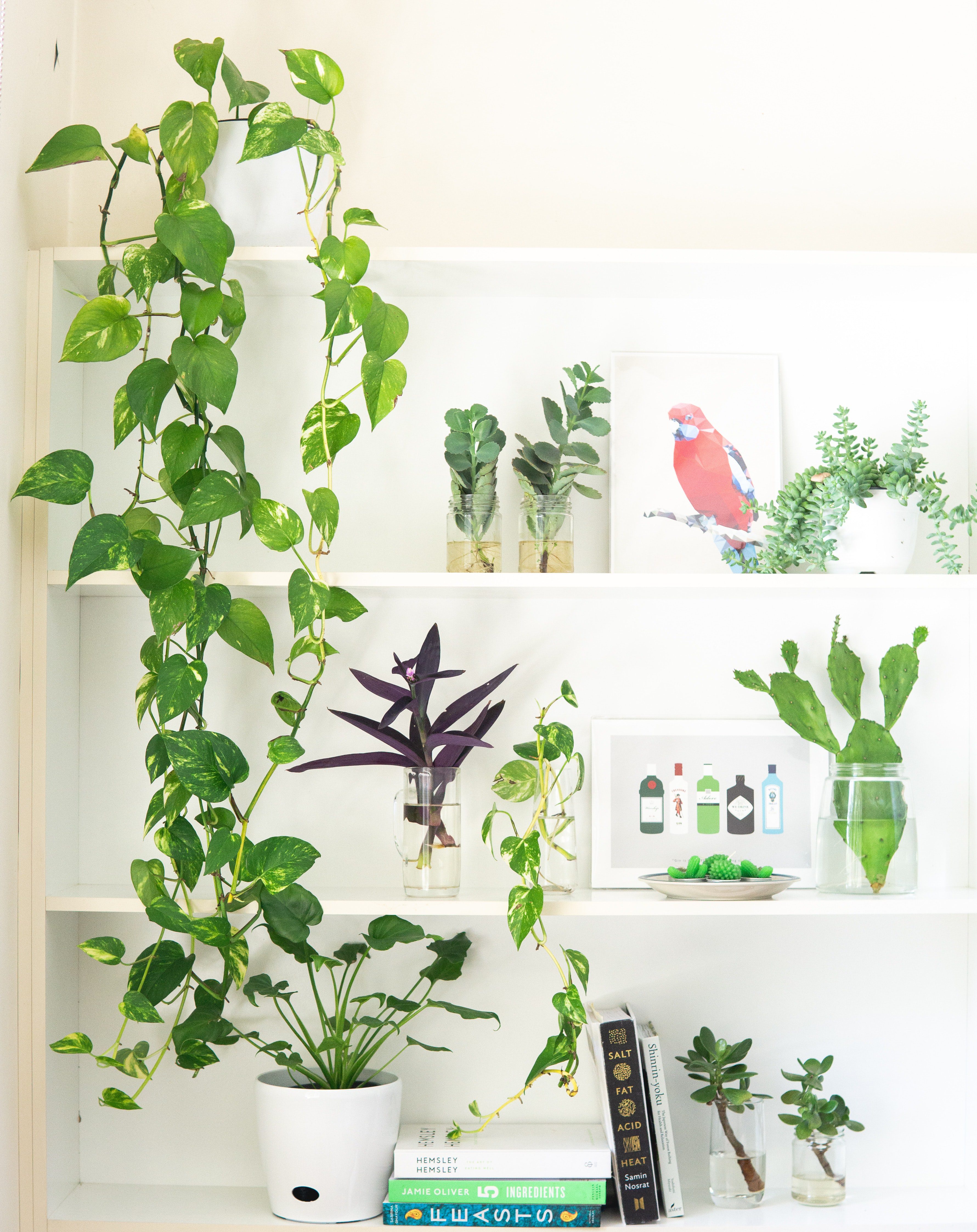
Philodendron
Philodendron plants are often mistaken for pothos. Similar to pothos, philodendron plants produce long vines that can easily stretch across a room. Philodendrons are great houseplants for beginners because they are very adaptable to their environment. They thrive indoors year-round and need very little care.
Philodendron Care:
Philodendrons prefer bright, indirect sunlight. If you notice the leaves of your philodendron turning yellow, your plant is likely getting too much direct sunlight. Avoid overwatering your plant. As a rule of thumb, allow the top inch of the soil to dry before watering. If your philodendron is growing slowly and has small leaves, it is time to fertilize your plant. Pale leaves indicate a lack of calcium and magnesium, essential nutrients for your plant.
Pet friendly?
The heartleaf philodendron contains insoluble calcium oxalates, making it poisonous to cats and dogs. Ingesting philodendron will cause swelling of the mouth, excessive drooling, vomiting, and difficulty swallowing.
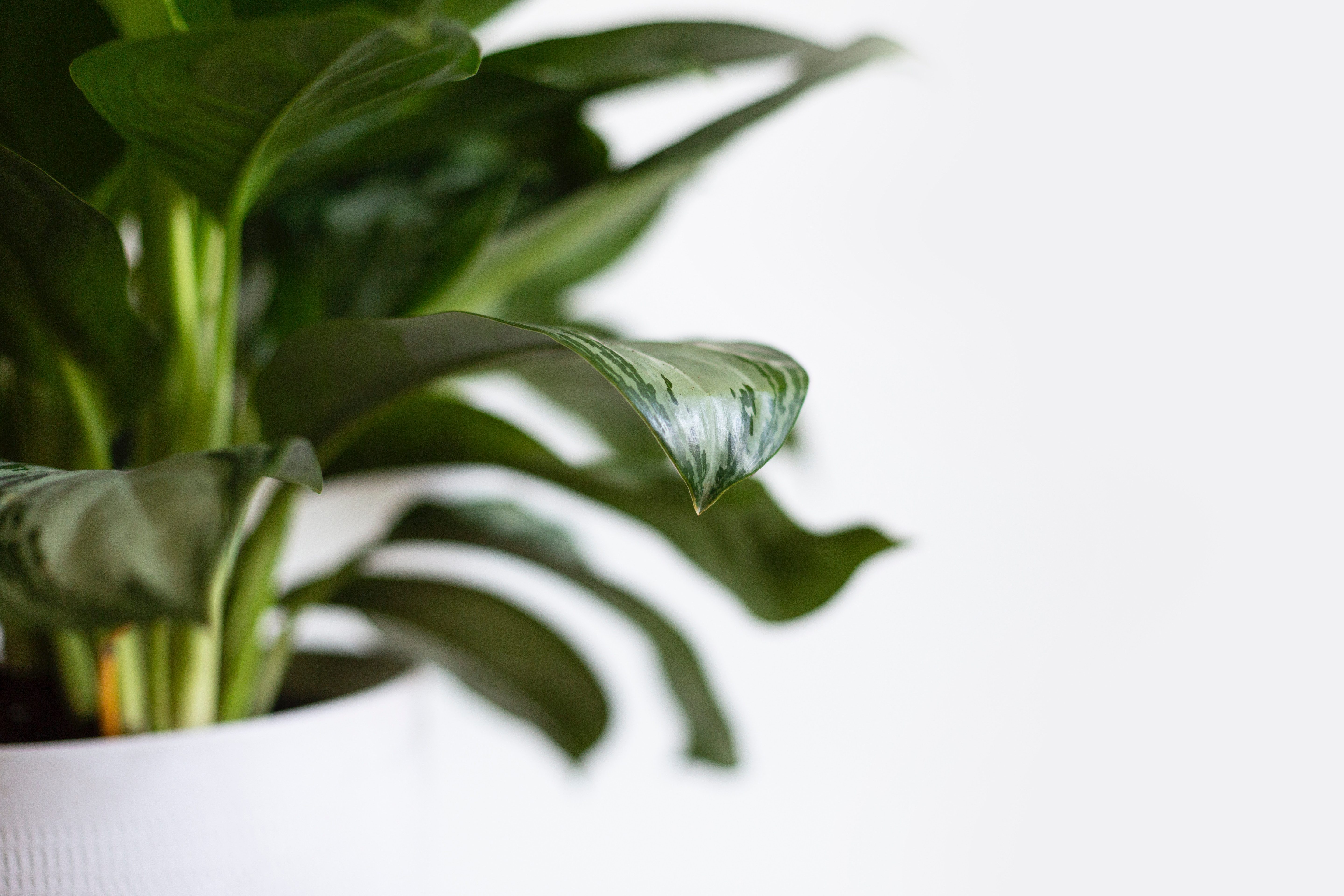
Chinese Evergreen
The Chinese evergreen plant is one of the most durable houseplants you can own. As long as you provide the right growing conditions, your Chinese evergreen will survive poor lighting conditions, underwatering, and lack of humidity. Because of this, Chinese evergreens are one of the most popular houseplants to own. Most varieties are variegated, meaning the leaves are multicolored.
Chinese Evergreen Care:
Place your Chinese evergreen in medium to low light, avoiding direct sunlight. Keep your plant in conditions above 60 degrees Fahrenheit, and try to keep it somewhere relatively humid. Placing your plant near a drafty location will cause the leaves to brown. Allow the soil to dry slightly between watering. Avoid overwatering your Chinese evergreen, as it will lead to root rot.
Pet Friendly?
Like the philodendron, the Chinese evergreen contains insoluble calcium oxalates, making it toxic to cats and dogs.
When choosing a hard-to-kill houseplant, all ten of these indoor plants are great options. When deciding on the best houseplants to keep alive, consider your specific living conditions. If you don’t get a lot of natural light in your home, you probably shouldn’t choose a cactus. For homes with pets, the best houseplants are cacti, cast iron plants, snake plants, and some varieties of succulents. Consider what works best for you, read up, and enjoy your new plant!
Camellia Sinensis – Your Indoor Tea Oasis
For tea enthusiasts seeking to enhance their tea-drinking experience, the “Camellia sinensis” plant is the perfect addition to your indoor space. This extraordinary plant serves as the true source for various tea types, including green, black, white, and oolong tea. Cultivating your own tea leaves at home not only introduces a fresh touch to your tea but also provides a satisfying gardening experience.
Growing Conditions:
Camellia sinensis thrives in bright, indirect light, making it well-suited for indoor environments with ample sunlight. Maintain consistent temperatures between 60-70 degrees Fahrenheit, and use well-draining potting soil to support healthy growth.
Watering:
Keep the soil consistently moist, avoiding waterlogging. Water when the top inch of the soil feels slightly dry. Striking a balance is crucial to prevent overwatering and root rot.
Harvesting Your Own Tea:
As your Camellia sinensis plant matures, embark on the rewarding journey of harvesting tea leaves. Experiment with different processing methods to craft personalized tea blends, from fresh green tea to robust black tea.
Pet-Friendly?
Camellia sinensis is considered non-toxic to most pets, including cats and dogs. However, it’s always advisable to monitor your pets’ interactions with plants and consult with a veterinarian if you have concerns.
Additional Tips:
- Regular pruning encourages bushier growth.
- Consider incorporating organic fertilizers to nourish the soil and support healthy tea leaf development.
Begin your adventure of creating an indoor tea oasis with the Camellia sinensis plant. For an in-depth guide on starting your indoor tea garden, explore our detailed resource at Indoor Tea Garden Guide. Cultivate, harvest, and relish the flavors of homegrown tea!
Don’t be Afraid to Try!
So, which houseplant for beginners fits best in your home? Hopefully, this blog has provided you with enough resources to find the houseplant that best fits your needs.
For more articles, sign up for our monthly blog newsletter. Or, browse our blogs centered around enjoying your home.

